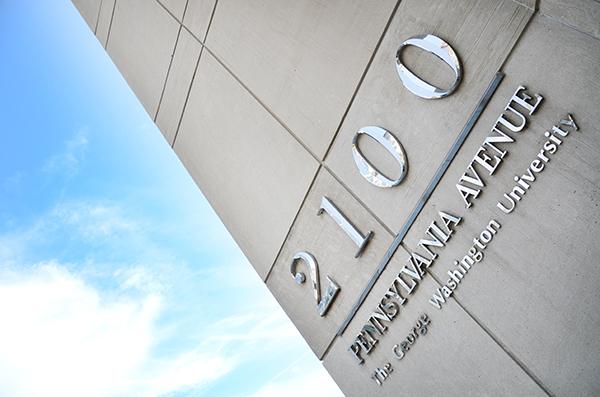
The company set to develop GW’s office complex at 2100 Pennsylvania Ave. will go forward with construction this year without a tenant lined up to pay the building’s high rent.
The risk is one that developer Skanska is willing to take with the 250,000-square-foot luxury property because, despite a weak rental market for office space in the city, the building will be easily marketable to high-paying tenants.
Experts say the lot on Pennsylvania Avenue, one of the most coveted addresses in the District, will help lure those tenants even as the federal government and many companies downsize amid rising rent prices. Skanska will take responsibility for finding the new tenant and financing the multi-million dollar project, while GW will reap the benefits and see its return on investment soar.
Office tenants in D.C. are cutting their square footage amid rising rental rates, according to market analysis from real estate investment management firm Cassidy Turley, which managed the GW-Skanska deal. Businesses have looked to move outside the city limits to neighborhoods in Alexandria, Va., McLean, Va. or Silver Spring, Md.
Rentals for offices across the District so far this year have totaled 110,000 square feet, less than half the total from the last quarter of 2013. Since 2010, prices have increased to $50.66 per square foot from about $48 per square foot.
With the low demand for office space in D.C., John Sikaitis, director of office research for Jones Lang LaSalle, said trophy-class buildings like the one at 2100 Pennsylvania Ave. are attractive to tenants such as “the high-end law firm, the high-end association, the high-end professional business service firm,” and others that can afford a steep price.
Chris Leinberger, chair of GW’s Center for Real Estate and Urban Analysis, said Skanska would only accept uncertainty if it was sure the project would pay off.
“They feel they can just wait out the market [and wait] to fill it up with the right tenants,” he said. “GW made the decision that they’re smart, rich and willing to take the risk, so let’s go forward.”
GW’s investments in real estate topped $813 million last year, according to its financial report, and will continue to grow as the prime property on Pennsylvania Avenue transforms into an 11-story office complex with ground-floor retail.
The University’s portfolio stands out among its peers in higher education with about half of its investments in real estate. Real estate gains have also bolstered the University’s $1.37 billion endowment, outpacing its growth rate over the past decade to become one of GW’s fastest-appreciating assets.
GW has already gained from its commercial buildings like The Avenue, which puts $9 million annually back into its operating budget. The rent from 2100 Pennsylvania Ave. will continue to help cushion GW’s bottom line, as the University invests millions in building ambitious academic buildings, hiring faculty and boosting financial aid funding.
The Avenue, developed by Boston Properties, has brought successful venues like Whole Foods Market and Circa to the area. Sikaitis said the real estate investment trust’s development of Square 54 “truly blends the central business district into GW,” making it a top neighborhood for businesses to set up shop.
“The reward for GW is extremely high because they are such a significant landowner in the overall area,” he said. “By coming up with this deal with Skanska they’re enhancing the value of the neighborhood over the longer term.”







